World of Design: Artists and Artisans and Their Inspiring Studios
http://www.decor-ideas.org 09/12/2015 23:13 Decor Ideas
One in a series from Houzz international editors on how our lives shape home design around the world
Passion and talent unite these 11 people — not only their passion for a craft, but the constant search for inspiration and the courage to turn that into a profession. Take a tour of these diverse studios and workshops, from Japan to Spain, and see how the places where these artists live and work help shape their creations.
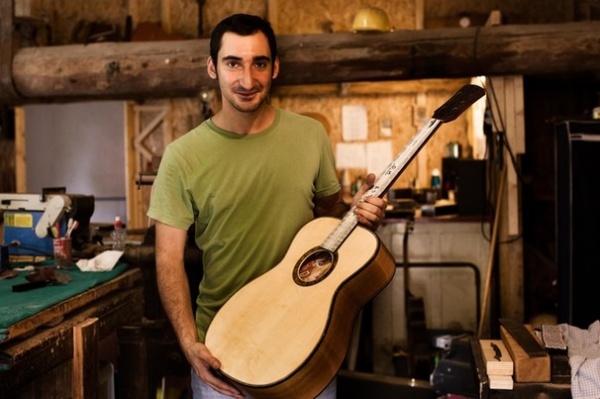
1. Handmade Musical Instruments in Italy
Who: Marco La Manna, 27
His creations: Guitars
Where: Dovera, a small village near Cremona, Lombardy region of Italy
The art: Marco La Manna has been working as a luthier, a maker of stringed instruments, since 2006, when he studied at a school for guitar making in Milan after graduating from high school. “To create a new guitar from sketches takes around 200 hours,” he says. “I work alone in my big studio while listening to music. It’s a very solitary job, but I need to concentrate and be very precise. I need to be particularly focused on the painting process — one more coat and the sound of the guitar could be different. I see my job as a way to give soul to an otherwise common material, wood.”
The regional influence: Luthiers work all over Italy, and it’s an old and difficult craft. But La Manna chose a very special place to open his studio: Cremona is where Antonio Stradivari, probably the most famous luthier, was born in the 17th century. It’s here that Stradivari created more than 1,100 instruments. (The ones that still survive are worth hundreds of thousands, if not millions, of dollars.)
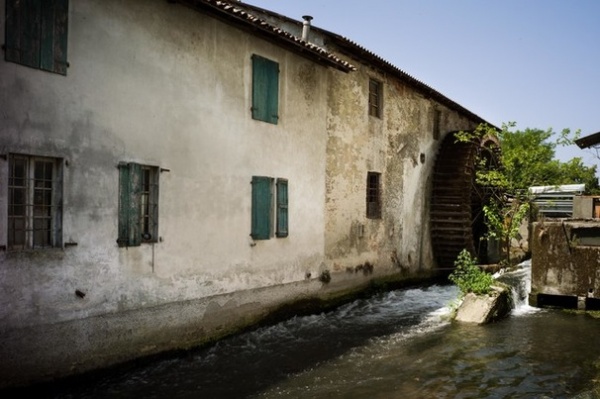
The place: La Manna’s studio is in a former flour mill. After the owners retired, they created a museum focused on traditional farming on the ground floor. The attic was empty, and they were looking for an artist to rent it to. La Manna got to know the family and eventually moved in. “In Milan I would never have had the chance to have such a space, and here it’s so quiet,” he says. From the studio’s window you can still see the big mill wheel turning.
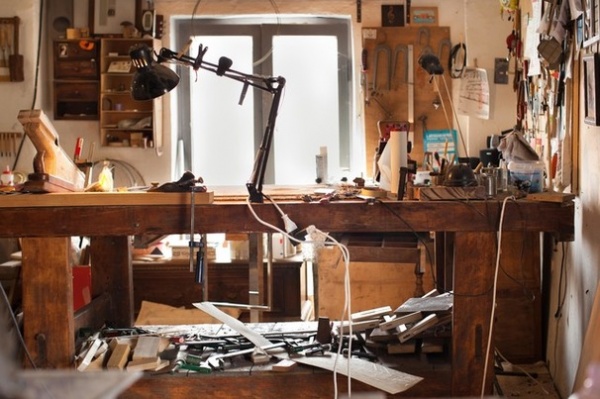
The wow moment: Collaborating with Augusto Creni, who attended the Guitar Institute of Technology in Los Angeles (now the Musicians Institute) and is a world-renowned manouche guitar player. Creni appreciates La Manna’s art and skills and commissioned some instruments from him.
See more of La Manna’s workshop
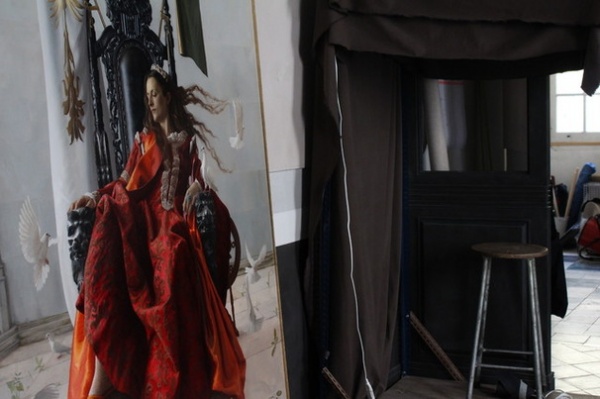
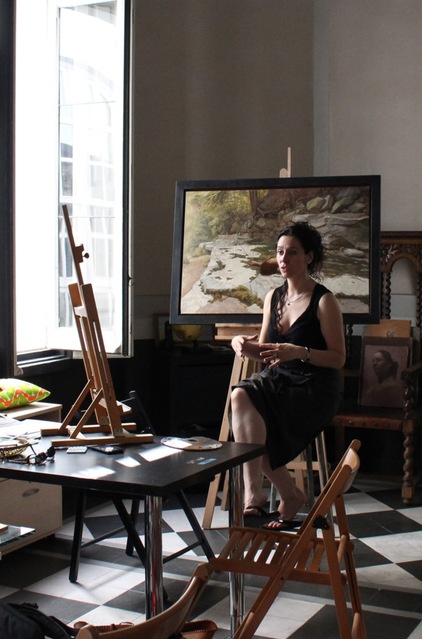
2. Fantasy Paintings in Spain
Who: Arantzazu Martinez, 38
Her creations: Figurative realism paintings
Where: Madrid, Spain
The art: “Everything I paint is so real that the doves I painted eventually had babies,” Arantzazu Martinez jokes. Her works create a world of magic and fantasy, but one in which the characters are based on actual people, furniture or animals.
Martinez graduated in 2000 from the Faculty of Fine Arts at the University of the Basque Country, then gained classical training at the New York Academy of Art. While she was there, a classmate introduced her to renowned realist painter Jacob Collins, founder of the Water Street Atelier, the Hudson River Fellowship and the Grand Central Academy of Art. Martinez became a student of Collins, who served as her mentor for three years. “Everything I know about 19th-century painting I learned from him,” she says.
For the oil on canvas seen in the first photo, Confianza Absoluta: La Bella Durmiente (Absolute Trust: Sleeping Beauty), Martinez received one of the most important figurative painting awards in the world, the Best in Show award by the Art Renewal Center foundation.
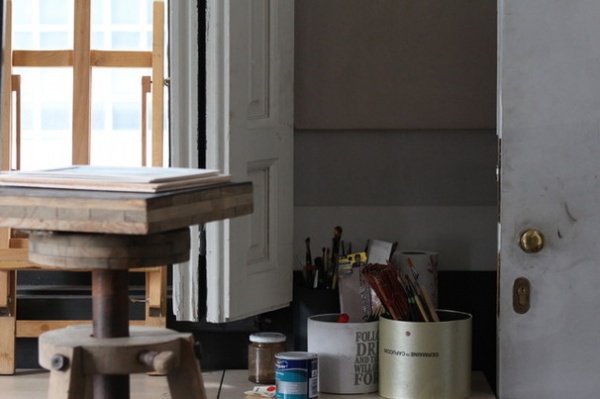
The regional influence: “Spain has so much pictorial force,” Martinez says. Her work is greatly influenced by paintings from the 19th century, in terms of both landscape and composition. In this sense, Fortuny and Joaquín Sorolla are her main references, as well as painter Francisco Pradilla y Ortiz; she loves his crowded compositions, as in Doña Juana la Loca (1877). Diego Velázquez, who worked in the 17th century, is also a strong source of inspiration and helped shape Martinez’s style. In fact, her studio is a stone’s throw from the Prado museum, and she goes there often to study his work.
The place: Martinez lives and works in a 300-square-meter (3,230-square-foot) house opposite the Reina Sofia museum in Madrid’s Atocha neighborhood. It’s an old three-story house, one of those of the former upper class, with a portico Martinez now uses as a patio and sometimes for her drawing. The house has the typical vaulted basement with exposed brick: “I call it the dungeon, also because I have the little studies of my students there, as if I have them confined,” she says with a laugh.
The wow moment: In 2009, Martinez received an email from film director George Lucas showing interest in her work and asking her to participate in a project with his company Lucasfilm. “I thought it was a scam, like when you receive a spam message saying you’ve won a prize. I couldn’t believe it,” she says. It was true, though: Martinez was asked to paint in a free style about Star Wars for a project called Star Wars Visions. “George Lucas was so pleased with the result that he ended up buying it,” she says.
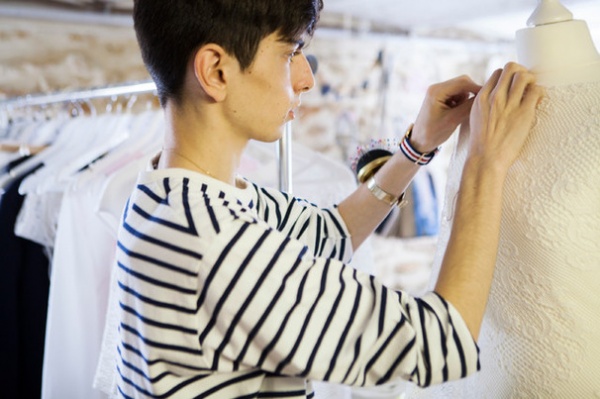
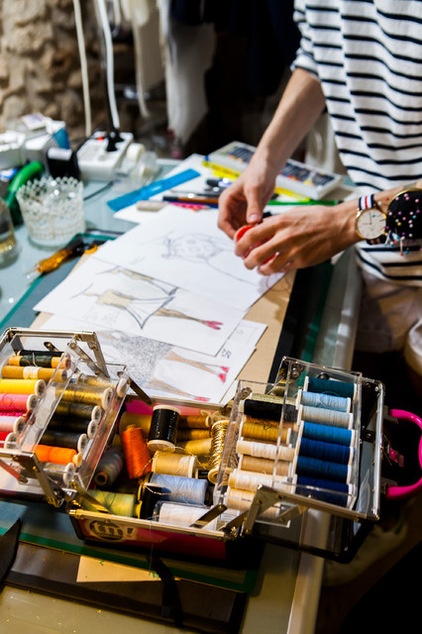
3. The Future of Fashion in France
Who: Reouven Zana, 17
His creations: Fashion design
Where: Paris, France
The art: “I dress women. I re-create figures that amazed me, starting with an icon, such as Brigitte Bardot, or an artistic movement,” Reouven Zana says. “I grew up in a creative family: My grandfathers were painters, and my grandmother used to make crochet for Chanel and famous actresses in the 1960s. Her work inspired me a lot.”
Zana established his first fashion brand when he was 14. “It was quite casual, and I finally decided to go much more haute couture. I can spend entire nights working on a project in my basement,” he says. He does everything himself, from the drawings to the patterns to the actual dressmaking. “I never took any sewing classes,” he says, “but I’m a passionate self-taught creator.”
The regional influence: Paris for Zana is a very stimulating city. “I have everything within reach: exhibitions, architecture, fashion houses and … women! Parisian women — past, present and future — are part of my main inspiration,” he says. “There are also places I visit to find inspiration, such as Le Marais and the Vincennes wood, where there is a very charming pond with a cascade, which is always very calming. I love being connected to nature.”
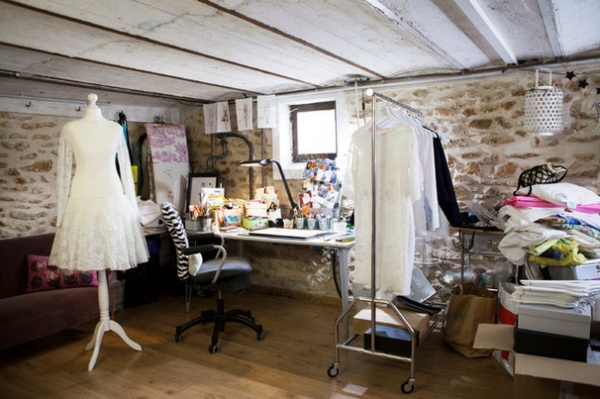
The place: Zana’s studio is in the basement of his parents’ house. Its 40 square meters (430 square feet) are divided between his studio and the studio of his mother, a decorator. “I go to this room as soon as I have ideas,” he says.
The wow moment: In early 2015, Zana put on his first show at Paris Fashion Week. “I worked hard on it for weeks until the last night, from the casting of the models and the creation of the clothes to the show itself. I didn’t know whether we would make it until the day itself, but I loved it and learned a lot.”
One of his favorite pieces is his lacy Ballet dress, inspired by Bardot, “because it mixes Parisian elegance with a touch of fun from Saint-Tropez,” he says. “It suggests without showing.”
See more of this basement studio
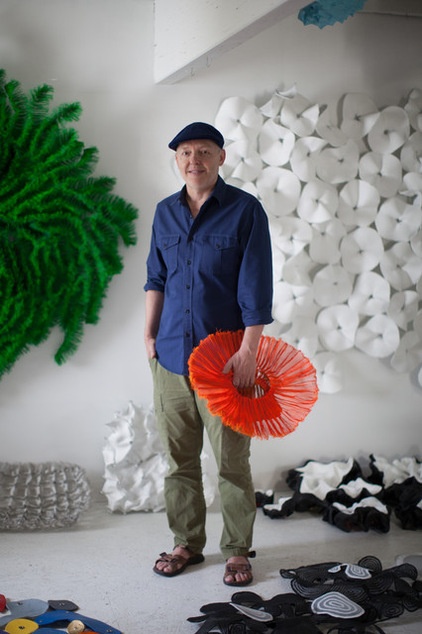
4. Magical Metal Mesh in the U.S.
Who: Atticus Samsell Adams, 54
His creations: Metal sculpture
Where: Lawrenceville neighborhood of Pittsburgh, Pennsylvania, United States
The art: Atticus Adams uses metal mesh to create 3-D art and installations. “I started using the material in 1992 during an architectural summer program at Harvard, and now metal mesh is the main material for all of my work,” he says. “Sometimes I incorporate beads, crystals or broken auto glass, because I enjoy the addition of something luxe or unexpected with this traditionally industrial material. I also enjoy coating the mesh with gesso to explore surface and volumes.
“I tried not to be an artist — I did not come from money, and it seemed too impractical,” Adams says. “Plus, I was uncomfortable with how it made me stand out.” As a compromise, he tried studying architecture and graphic design to come up with a “practical” creative career. “But it was no use. I stopped fighting it and put my energy into being the best fine artist I could be, which is still in process.”
The piece Adams is seen holding is a floral form covered in lacquer, designed to hang on a wall.
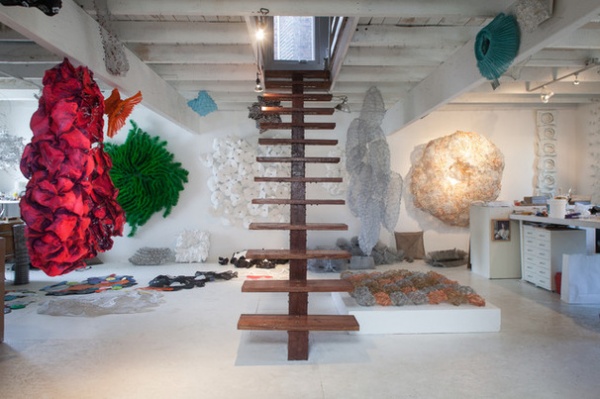
The regional influence: Adams grew up in West Virginia, steeped in traditional folk art. “Several members of my family were self-taught artists, deeply involved in such crafts as wood carving and quilting,” he says. “Making tangible objects is definitely part of my family heritage. I come from a tradition of using basic, easily available materials for creative outlets.”
Adams’ inspirations are rooted in memory. “Many are visual experiences I had during my West Virginia childhood. They percolate to the surface as I try to channel the beautiful and happy moments. This has ranged from frost-covered plowed fields to collecting moss from the woods to summer breezes blowing the laundry on clotheslines.”
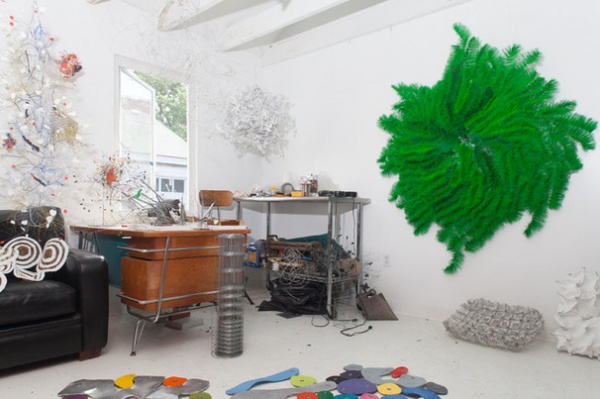
The place: The studio was created from an area that used to be a family residence above a small general store. Two walls were taken down and beams put in to make one large open space. Adams’ partner, Garry Pyles, found a metal staircase online but it was beyond their budget, so they had something similar made out of wood. “Keeping the beams exposed is perfect for my art, since many [pieces] hang from the ceiling,” Adams says. “The floors were painted white to help bounce more light, which helps when cutting out and manipulating the pieces of metal mesh.”
The wow moment: “Definitely one wow moment for me here in Pittsburgh has been creating an installation for one of the Mattress Factory Gesture shows. These projects were exciting because they were so unexpected and more high-profile than any I’d done in the past. The Mattress Factory museum is an institution dedicated to the art of installation — a place you would expect to find in a much larger city, such as New York or Chicago. A quote from H.D. Thoreau’s Walden about making your life’s dream a reality was my jumping-off point. I created something monumental in aluminum mesh to signify this artistic fullfilment.”
See more of Adams’ work and studio
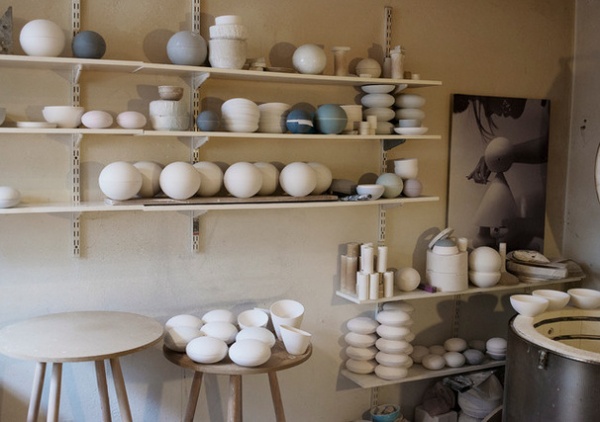
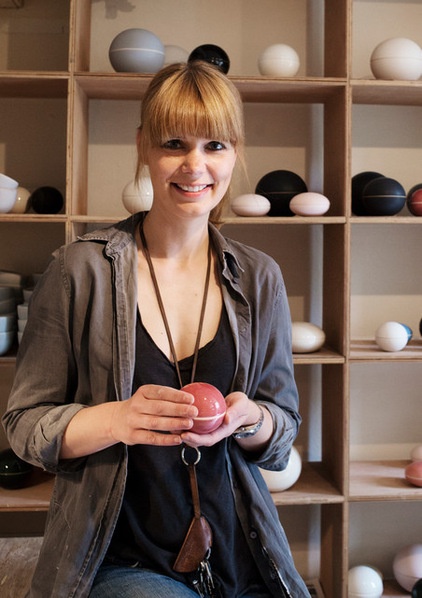
5. Beautifully Simple Ceramics in Denmark
Who: Julie Bonde Bülck, 37
Her creations: Ceramics and product designs
Where: Nørrebro area of Copenhagen, Denmark
The art: “I’ve worked with ceramics since the age of 14, when I took lessons in addition to my school studies,” Julie Bonde Bülck says. “Later I entered the Danish Design School and graduated in 2008.” She worked as a designer at Royal Copenhagen’s porcelain factory for a year before following her dream and starting her own studio, Uh la la Ceramics, designing and making high-end pieces.
The regional influences: “I tend to stick to the Scandinavian design tradition of great craftsmanship, made in the country of origin,” Bonde Bülck says. “It means I can be close to the production and have the freedom to create new glaze colors every week.” Typical of Danish design, she uses high-quality materials. (Most Danish design classics are made of pure materials, such as steel, silver, wood and so on.)
“The tradition of design based on simplicity has had a great impact on me,” Bonde Bülck says. “I love geometric shapes. My pieces are meant to be objects based on the aesthetics of the material more than functional design. I usually twist simple shapes with glazes of sometimes experimental character.”
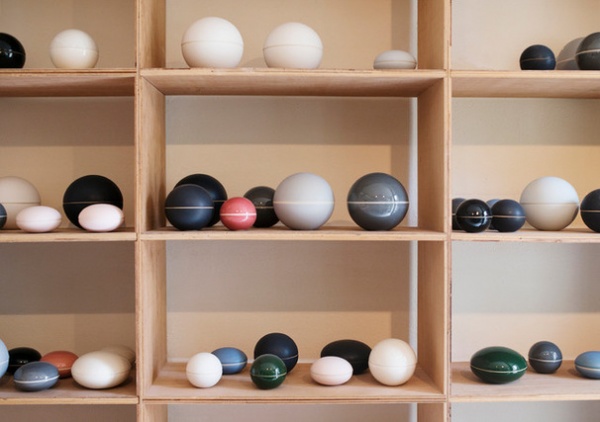
The place: Bonde Bülck’s studio doubles as a showroom: In the basement, she has a shop for her works, and her working studio stretches from behind the shop to the first floor. The Nørrebro district is filled with interesting boutiques. Very close to her studio is the renowned restaurant Relæ, owned by star chef Christian F. Puglisi. Bonde Bülck designed all the plates for him, a year before he was awarded a Michelin star.
The wow moment: Two years ago, Bonde Bülck was invited to participate in the curated Wallpaper* Handmade exhibition in Milan, Italy. “I got asked to do some big, one-of-a-kind showpieces as part of my Bonbonnière collection [shown here] for the exhibition, in which great designers such as Jaime Hayon and Tom Dixon took part,” she says.
See more of this studio
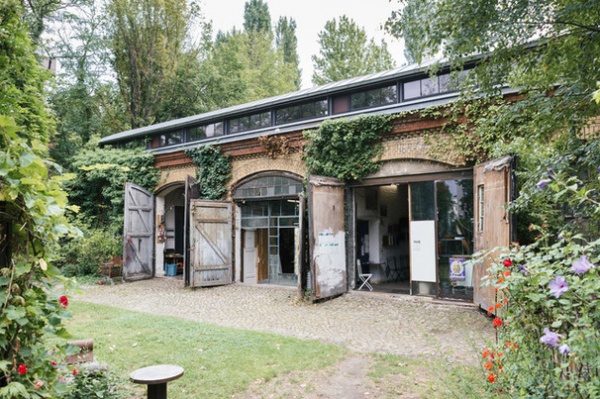
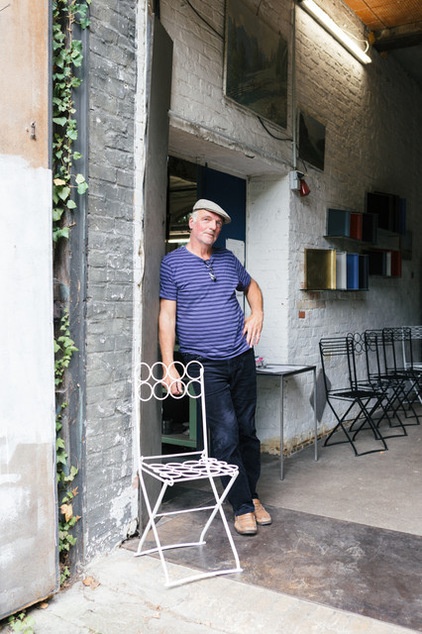
6. Steel Creations in Berlin
Who: Anderl Kammermeier, 58
His creations: Metal furniture and tableware
Where: Moabit district of Berlin, Germany
The art: Anderl Kammermeier was born in southern Germany and originally trained as a goldsmith. Today, however, he works mainly with steel and creates much larger objects, such as furniture (including the garden chairs pictured), as well as tableware (such as the metal trays on the wall), and also takes commissions from artists or for stage settings. “I’m not a designer in the sense of industrial design — rather, an artisan. Or an artist designer,” Kammermeier says.
After doing a rough sketch, he develops his pieces right on the workbench. “You can feel this in an object, that someone has made it with their bare hands,” he says. “And you can notice the quality and weight of the material even if you only look at it.” One rule applies during every stage of his design process: “I give it a lot of time. Sometimes years.”
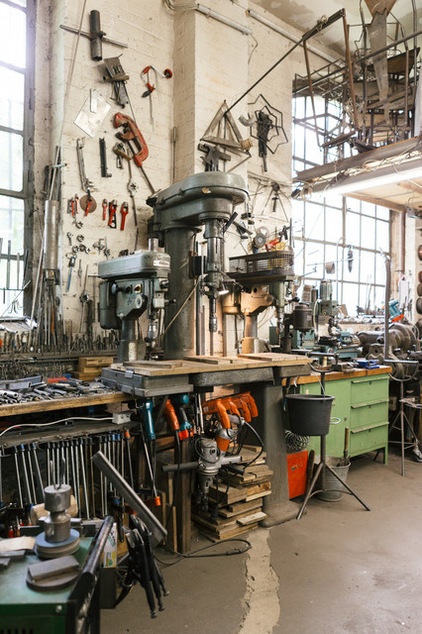
The regional influence: In 1983, Kammermeier moved from Bavaria to West Berlin. He fell into a job in a steel factory, where he began to explore steel as a material, since he had access to the machinery. The Berlin of the 1980s, with East Germany still in existence, shaped his attitude; the art scene was bustling back then, and New German Design — a movement whose members were experimenting with objects and furniture — was in full swing. If he hadn’t moved to Berlin, Kammermeier realizes, his life would have been completely different.
The place: Kammermeier has occupied this old military depot since 1988. It’s one of those authentic Berlin places that have become quite rare. “It would not be possible to have such a space in Munich,” he says. It’s a big workshop building, with a garden full of places to sit and play. He draws a lot of inspiration from his surroundings, and also from the local people: For a few Sundays each summer, he opens his garden and studio to the public and puts on music events, exhibitions and readings.
The wow moment: One day in 2009, Peruvian fashion photographer Mario Testino did a photo shoot with Keira Knightley for Vogue in Kammermeier’s enchanted garden. “For two hours or so, there was a special tension in the air,” Kammermeier remembers. One of his rusty prototypes, the Berliner gartenstuhl (Berlin garden chair), was used as a prop. “I thought, ‘If Testino thinks this is a good motif, it’s probably worth following up the design.’ I wanted to anyway, but this gave me a special kick,” he says. Today, the Berliner gartenstuhl series is one of his bestsellers.
See more of this garden and studio
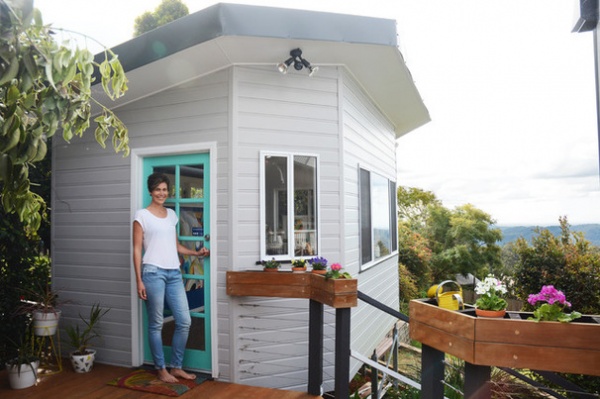
7. Paintings as Bright as the Sun in Australia
Who: Tamara Armstrong, 33
Her creations: Vibrant paintings
Where: Tamborine Mountain, Gold Coast hinterland, Queensland, Australia
The art: Tamara Armstrong describes her art as colorful and bold. “I mostly paint vibrant portraits of empowered women and bright, quirky birds, as well as geometric-patterned animals and tropical plant motifs,” she says. “I’ve been painting for as long as I can remember. I think it was around the age of 4 that I was officially given my first set of paints, and I haven’t looked back since.”
She started working as a professional artist three years ago. “Painting is my ultimate indulgence, and I just feel so incredibly fortunate to have found a way to make a living from doing what I love most,” she says.
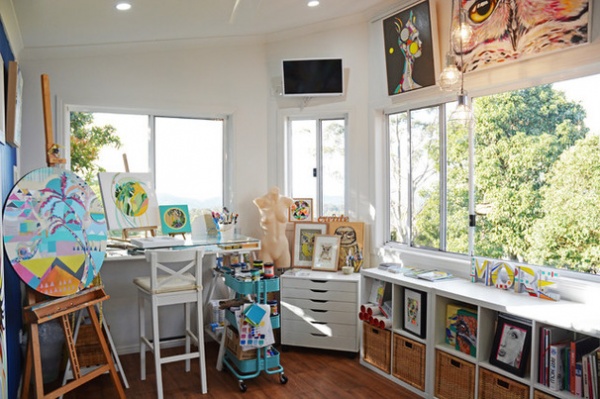
The regional influence: “There’s so much natural beauty in this area and, since moving here six years ago, my creativity and artistic practice in general have just gone from strength to strength,” Armstrong says. “The mountain ranges and valley views my studio takes in are reflected in my use of triangles and birds in a lot of my recent paintings.” Tamborine Mountain has always been considered a sacred place among the indigenous people of the area. Their ancestors believed you should never live on the mountain, as it was a place to visit for healing and rejuvenation, and a few spots in the rainforest are believed to hold powerful magnetic vibrations. “I certainly feel there’s something very empowering up here for myself,” Armstrong says. “Whatever it is, I don’t plan on leaving anytime soon.”
The place: The studio, built in March 2014, stands on the spot of a former garden gazebo. The front door is a reclaimed French window. “I painted it in my favorite turquoise color of Dulux Magnetic Magic. I find it to be a really energetic and inviting hue, and it’s also one I use in almost all of my paintings,” Armstrong says. She requested that the structure have as many windows as it could physically handle so she could enjoy the inspiring views.
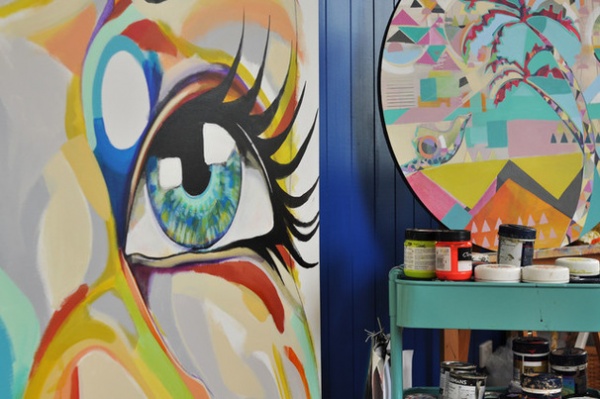
The wow moment: “Every time someone commissions me to complete a painting or mural for their home, it’s just so exciting and hugely flattering,” Armstrong says. “But if I had to choose one standout project, it would be landing the much-sought-after gig of designing and painting a large-scale outdoor mural for health and well-being hub I Quit Sugar’s rooftop garden terrace in Surry Hills, Sydney.
“I got to collaborate with garden designer Richie Northcott, who built a series of recycled-timber, self-watering planters that are positioned along the wall that features my mural,” she says. “It was a really amazing and memorable experience for me, and the end result was really striking.”
See more of this colorful studio
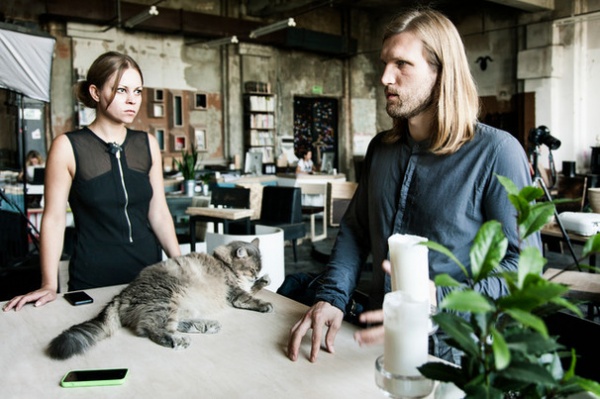
8. Handmade Furniture in Russia
Who: Anna Sazhinova and Konstantin Lagutin of Archpole, both in their 30s
Their creations: Architecture and object-oriented design
Where: Moscow, Russia
The art: “Since we began in 2008, we haven’t approached design as a process of choosing some furniture from catalogs and placing it here and there, but have tried to make architecture and furniture become one thing,” Konstantin Lagutin says. “We’re aiming to make interior design and handmade furniture more personal and affordable, so anyone could buy it and bring it into their home. All 400 objects and pieces of furniture in our collection are connected to each other and give people a chance to combine them however they like.”
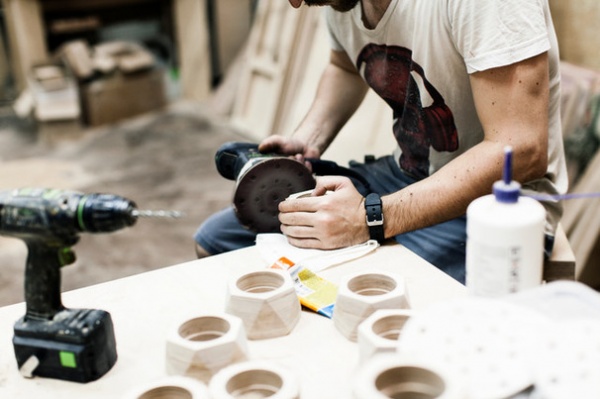
The regional influence: Archpole focuses on furniture and small objects handmade from birch plywood and reclaimed wood; birch, in particular, is popular in Russia for its clean beauty. But the duo aren’t merely inspired by their country — they also want to influence it. “Russia is very megalopolis-oriented. All businesses are located in the big cities, such as Moscow,” Anna Sazhinova says. “That’s why a lot of people far from here don’t have a chance to get a decent workplace. We decided to change the world a bit. In September, we’re starting the construction of buildings in a tiny village in the Vologda region, which will become our headquarters and factory.”
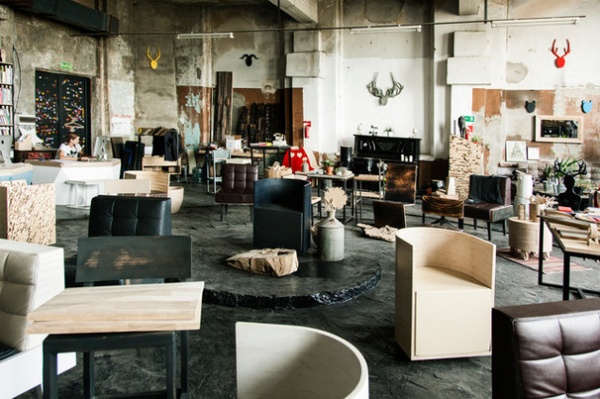
The place: Since 2012, Archpole’s Moscow studio has been located in a 1915 neo-Gothic building rich in history. The Elektrozavod factory was built for a large company making rubber products; the Russian Revolution of 1917 ended that chapter, but 10 years later electric lamps were being produced at the site. During World War II, the factory made rocket launchers, and afterward, transformers and parts for transmission lines. Today it’s the home of architectural offices, photo studios and workshops.
The wow moment: “Our favorite item is the chair from our Full Moon collection. It’s the most basic one, but we perfected it, and it became our most popular product,” Lagutin says. Sales of the chair aside, there’s something else special about it: “All cats — not only our office cat, Tom — like this chair because of the shape of its seat. If a cat owner buys one, their pet is guaranteed to sit on it.”
See more of this studio and showrooom
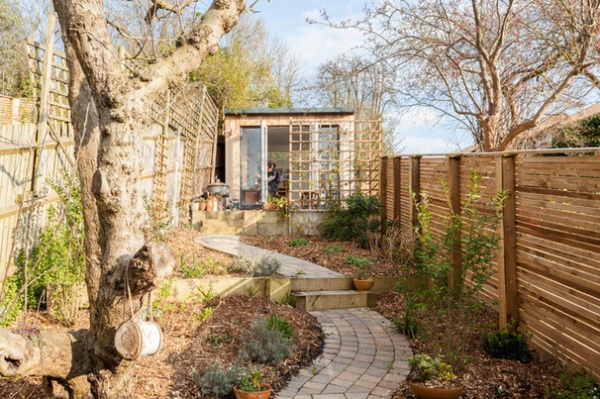
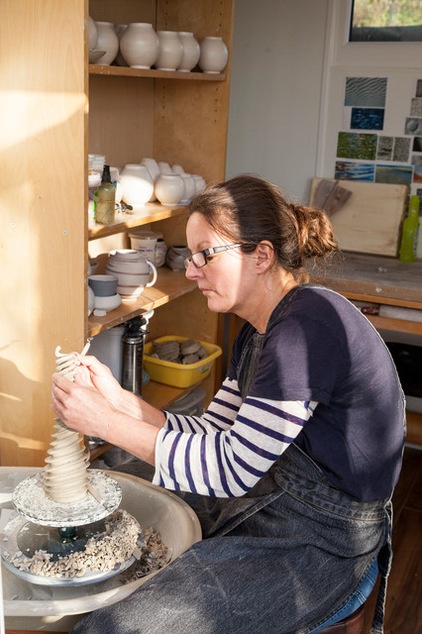
9. Organic Pottery in the U.K.
Who: Janene Waudby, 45, of jceramics
Her creations: Ceramics
Where: London, England
The art: Waudby works in a custom studio at the end of her garden. Her Moon vases, seen here on the shelving, are created with a pit-fire method. “They’re fired for the first time in the kiln, and afterwards I wrap them in ferns or bits of hemp and put them in the sawdust fire,” she says. “When the pots come out, you never really know what you’re going to get. Each one is individual, because you can’t really replicate them.”
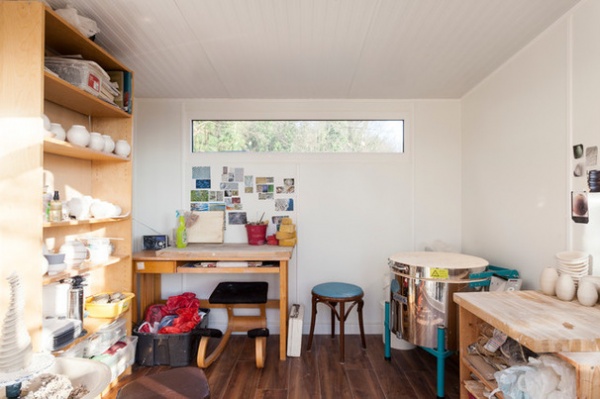
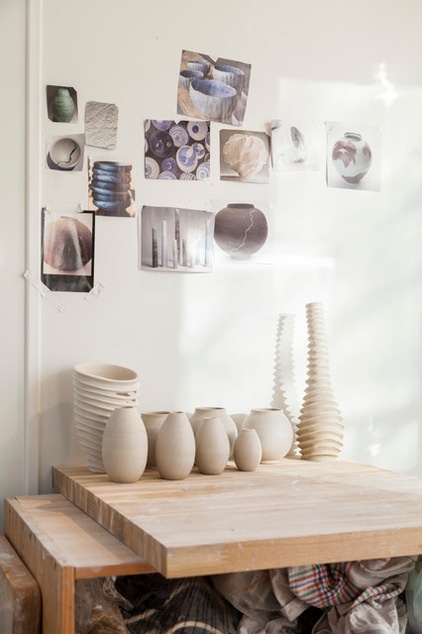
The regional influence: Waudby’s work is influenced by landscapes and the forms of nature, so her potter’s wheel is positioned right by the large windows of her studio so she can look out at the garden as she works.
The place: The studio was the first thing to be installed in the garden when she moved into the house. “We built everything else around it,” she says. “I wanted windows all across the front and one across the back as well, because that’s where the morning light comes in.” The studio has become a refuge and an idyll, even when she’s not working. “Sometimes, when I’m sitting on the terrace, neighbors come up and bring me a cup of tea,” she says. “It really is a major living improvement.”
The wow moment: One of Waudby’s current projects revolves around a series of elongated and corrugated vases. “My sister calls it the parsnip,” she says with a laugh. “I wanted to explore the idea of something that’s fundamentally static but looks as if it has movement. The idea is to make them look as if they’re alive.”
See more of this pottery shed
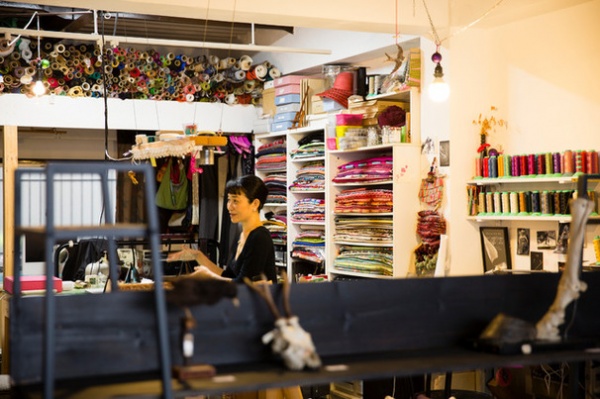
10. Colorful Bags in Japan
Who: Akemie Shiroyama, in her 40s
Her creations: Custom handbags
Where: Tokyo, Japan
The art: Akemie Shiroyama started her career as a bag designer about 10 years ago. “I now create one-off bags tailored to individual customers, combining elements and materials carefully selected after consultations of anywhere between 40 minutes and two hours,” she says.
She uses fine colored leather and beautifully crafted fabrics. “I love to create bags, because they’re like your best friends,” she says. “You can take them with you everywhere and share all your experiences, good and bad. When you feel a little sad, your bag is always by your side and can cheer you up by showing its happy colors or cheerful patterns that you chose for yourself.”
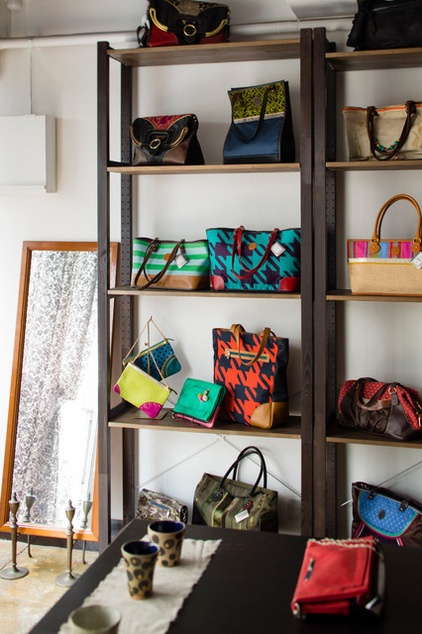
The regional influence: “People often say my style is not very Japanese, but I learned from my first boss, a designer from the Okinawa Islands in the far south of Japan,” Shiroyama says. “She used many bright colors so boldly and beautifully that I learned about the unexpected but brilliant matching of different hues.” Shiroyama’s studio is in Higashi-Kanda, one of the “artists’ and artisans’ towns” in Tokyo full of contemporary art galleries, artists’ studios and art supply stores. “The atmosphere of this town inspires me a lot,” she says.
The place: Shiroyama designed the interior of her rented studio, which is a former garage. “I had a very clear idea of my own studio since I started to work as a designer. It was inspired by my favorite boutique in Aoyama, Tokyo. A lot of beautiful dresses were displayed in the front half of the store, and in the back half, behind a sheer curtain, was the studio of the British owner, where he sewed dresses. It was like an open-kitchen restaurant: Customers could buy his handmade dress freshly from the ‘oven.’ I had been dreaming of having my studio like that.”
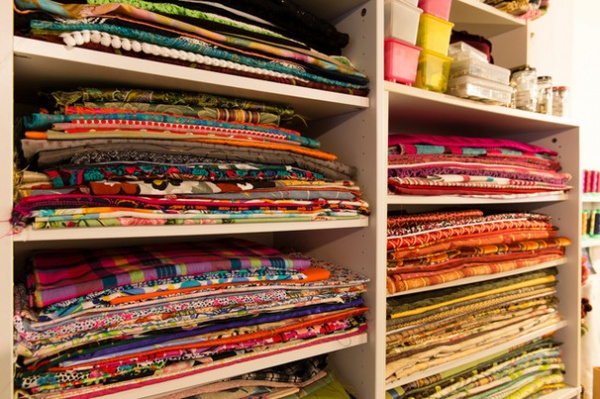
The wow moment: “As I’m always working on very personal and individual projects, my wow moments often come when I talk with my customers,” Shiroyama says. “Some of them said the process of selecting materials for their bag was like a healing session. It’s probably a good opportunity for them to remember their favorite things from deep inside. It’s wonderful to know my bag can cheer up the owner even before I make it. I work alone in this studio every day, but I feel I’m always with people.”
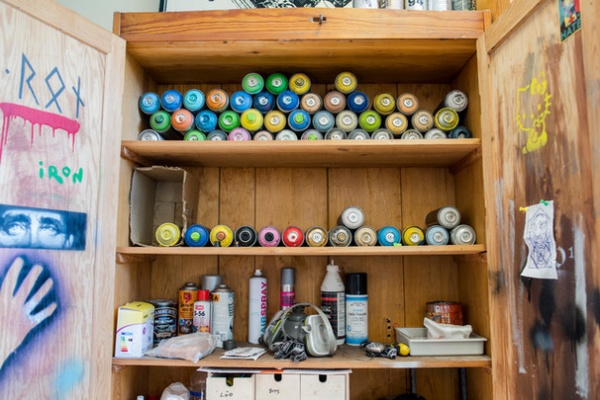
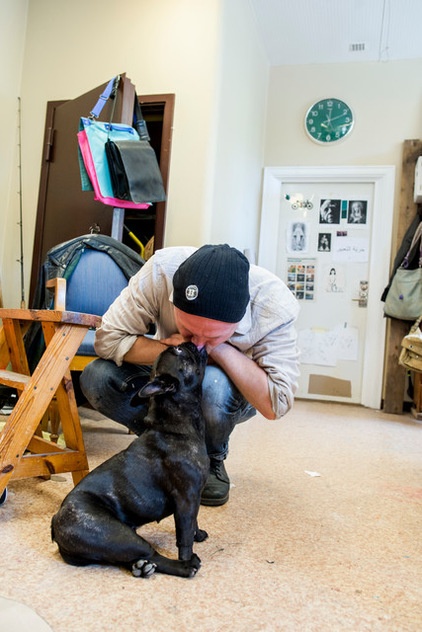
11. Cool Spray Paint Art in Sweden
Who: Iron
His creations: Street art
Where: Southern Sweden
The art: “I’ve always worked with images, in various ways. It started with graffiti when I was young, but always in a figurative form rather than tags,” Iron says. “With the rise of street art, my interest grew again. I was a bit bored with the art form as an observer, but as soon as I picked up a can, I was hooked again.”
Anonymity is very important to him. “It allows me to work in peace and let the images take center stage,” he says. “Sometimes I take the liberty of painting without permission, which is deemed vandalism rather than art … though that is debatable, I feel. I follow my inner moral compass.”
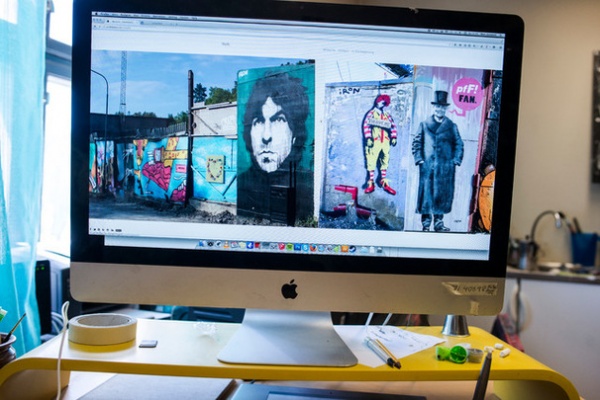
The regional influence: “I’ve swapped city life for the countryside — the peace and quiet is good for creativity. I also produce street art in natural surroundings. But politics also inspires me, and the frightening tendencies sweeping through Sweden and other parts of Europe.” For example, Iron has painted a version of Shepard Fairey’s Hope Barack Obama poster depicting a right-wing Swedish politician with the word hate on it instead. “That has spread quite well through social media,” he says.
The place: Iron’s studio is in an old factory that still has a huge brick chimney. “Every day I think it’s going to come tumbling down,” he says. “Underneath the building runs a stream that used to power the machinery inside. I’m the only artist here, but we have an inventor, a bookbinder and a motor club instead.”
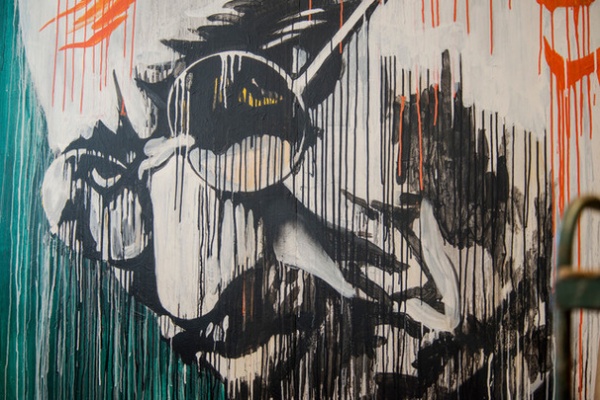
The wow moment: “It’s always around the corner — the next project is always the best one,” he says. “But I’m decorating an official space in Stockholm, which will be revealed soon. Street art is gaining increased momentum, since there are now dedicated walls and spaces where we can paint — and where people can come to see our work.”
See more of this studio
Tell us: Are you an artist, an artisan or a craft lover? Show us your studio and recent work, and tell us something about how where you live has shaped your style.
Related Articles Recommended












